Imagine a world where you could walk from Antarctica to Alaska without ever crossing an ocean. This might sound like a fantasy story, but it was the real world a very long time ago!This was the world of the Pangea supercontinent.
It was a time when almost all of Earth’s land was stuck together in one giant, C-shaped piece of land. This was our planet from about 335 to 175 million years ago.
Life on Pangea was full of challenges. The weather was very harsh, and the animals that lived there had to be very strong. Learning about this lost world is an important part of understanding how life and our planet have changed over time.
Don’t Miss This!
After reading, challenge yourself with our interactive quiz at the end. Click here to take the Quiz
Index
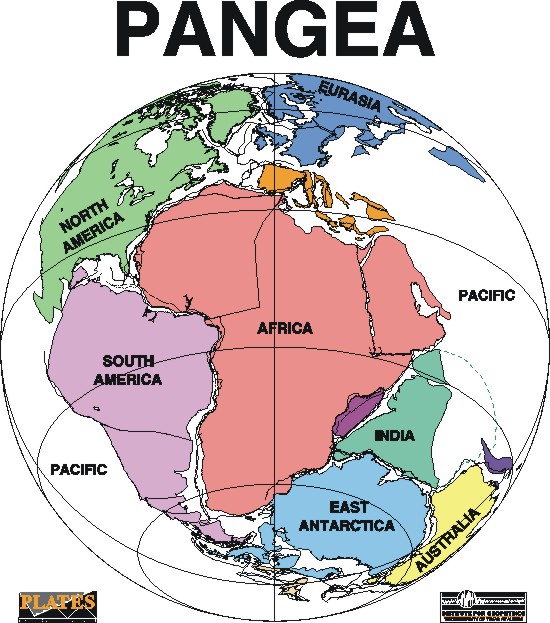
A map showing the Pangea supercontinent, with today’s continents outlined.
A World of Crazy Weather
Because the Pangea supercontinent was so huge, it had a very strange climate. The main reason for this was that most of the land was very far from the ocean. Oceans help keep weather from getting too hot or too cold.
With no ocean nearby, the middle of Pangea was a giant desert, much bigger than any desert on Earth today. This area had super hot summers and freezing cold winters. This made it a very hard place to live.
The coasts were totally different. They were hit by giant rainstorms called “mega-monsoons.” The huge Panthalassic Ocean that surrounded Pangea created weather patterns so big we can hardly imagine them today.
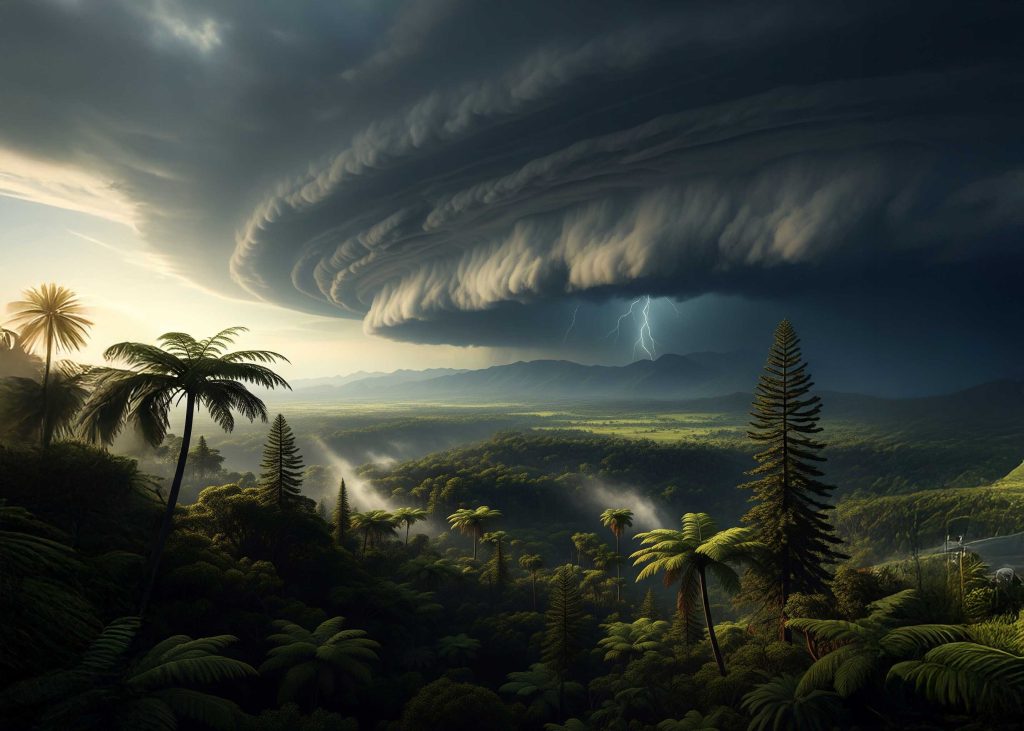
Tough Life on the Supercontinent
The plants and animals of Pangea were tough survivors that were built for this harsh world. Before the dinosaurs, during a time called the Permian Period, the main land animals were our own distant relatives, called synapsids.
These included the famous sail-backed hunter, Dimetrodon, and large plant-eaters with big, round bodies. The top hunters were the scary Gorgonopsians, which were fast and had huge saber-teeth.
Everything changed after a terrible disaster called The Great Dying. In the Triassic Period that came next, the first dinosaurs appeared, like the small hunter Eoraptor. But for millions of years, they weren’t the kings yet. They were overshadowed by another group of reptiles called crurotarsans, which were the ancestors of today’s crocodiles.
The plants were tough, too. There was no grass or flowers. Instead, the land was covered in hardy plants like pine trees, ginkgoes, and ferns that could survive with very little water.
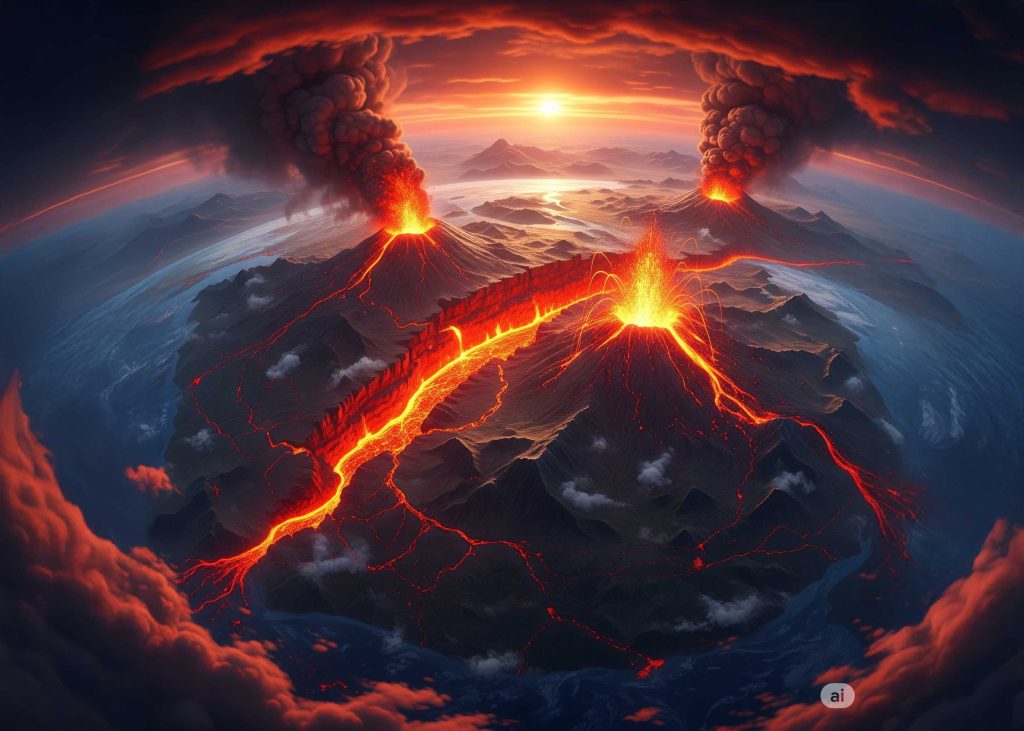
The Great Volcanic Breakup
Pangea didn’t just drift apart quietly. It was torn apart by fire and volcanoes! Starting around 200 million years ago, heat from deep inside the Earth pushed up on the land.
This caused the ground to stretch, get thin, and finally break. This breaking was matched with some of the biggest volcanic eruptions the world has ever seen. Giant cracks in the earth poured out lava for hundreds of thousands of years.
This volcanic explosion was a key reason why Pangea split into two new, smaller supercontinents. In the north was Laurasia (which became North America, Europe, and Asia). In the south was Gondwana (which became South America, Africa, India, Australia, and Antarctica).
This breakup was a huge moment for the story of life. As new, smaller continents formed, the weather became milder and wetter. More importantly, groups of animals were separated from each other.
Because they were separated, they started to change in their own different ways. This is the main reason why every continent today has its own special animals. For example, kangaroos only evolved in Australia because it was an island for a very long time.
Clues That Pangea Was Real
The idea of a supercontinent isn’t just a guess. It’s backed up by a lot of proof from all over the world.
- The Puzzle Fit: The most famous clue is the surprising way the coasts of places like South America and Africa fit together like puzzle pieces.
- Fossil Clues: Scientists have found the exact same types of ancient animal fossils on continents that are now separated by huge oceans. For example, fossils of a reptile called Lystrosaurus have been found in Africa, India, and Antarctica. These animals couldn’t swim, which proves the lands were once connected.
- Matching Mountains: Big mountain ranges that are now on different continents match up perfectly. The Appalachian Mountains in the U.S. are made of the same rocks as mountains in Scotland and Norway. They used to be part of the same single mountain chain.
- Ancient Weather Clues: Scientists have found evidence of ancient glaciers in places that are hot today, like Africa and India. This only makes sense if those lands were once together near the South Pole.
- Magnetic Rocks: This is the strongest clue. When lava cools and turns into rock, tiny magnetic bits inside it point to where the North Pole was at that time. They act like tiny, frozen compasses. By reading these rocks, scientists can figure out where each continent used to be and prove they have moved over time.
“Pangaea is a reminder that the Earth is a dynamic planet, and the world we know is just a snapshot in its long and dramatic history.”
Understanding Pangea helps us understand the big, slow engine that pushes our planet’s continents around. It teaches us that the world map doesn’t stay the same. The same forces that broke Pangea apart are still shaping our world today.
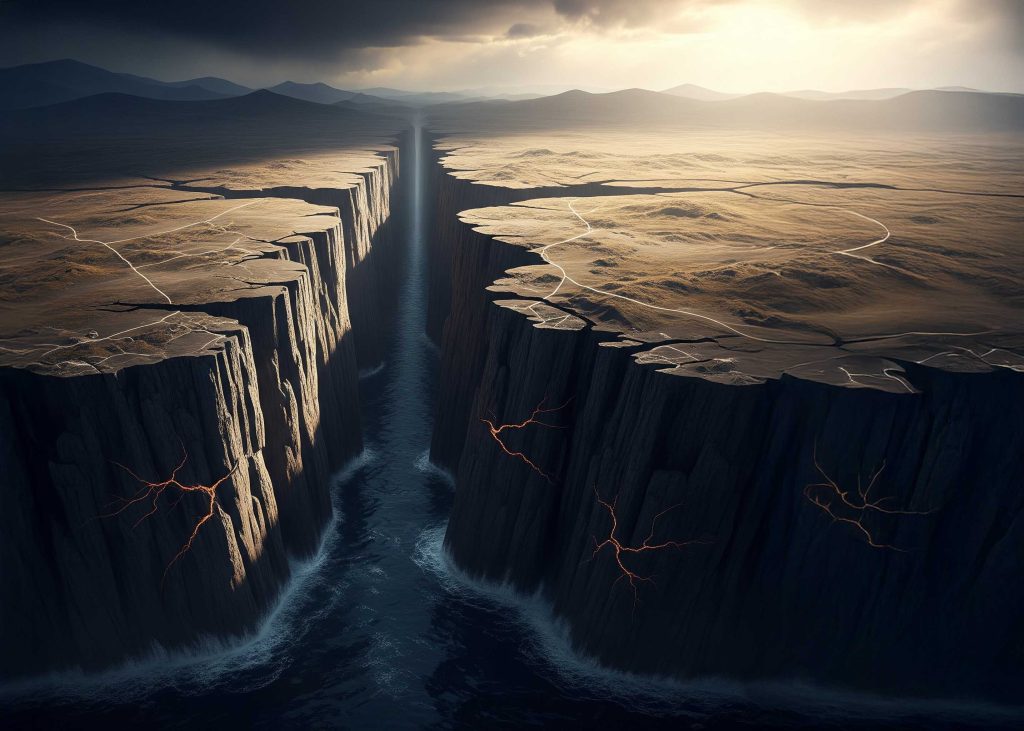
Pangaea Quiz
How much do you know about the world’s last supercontinent?

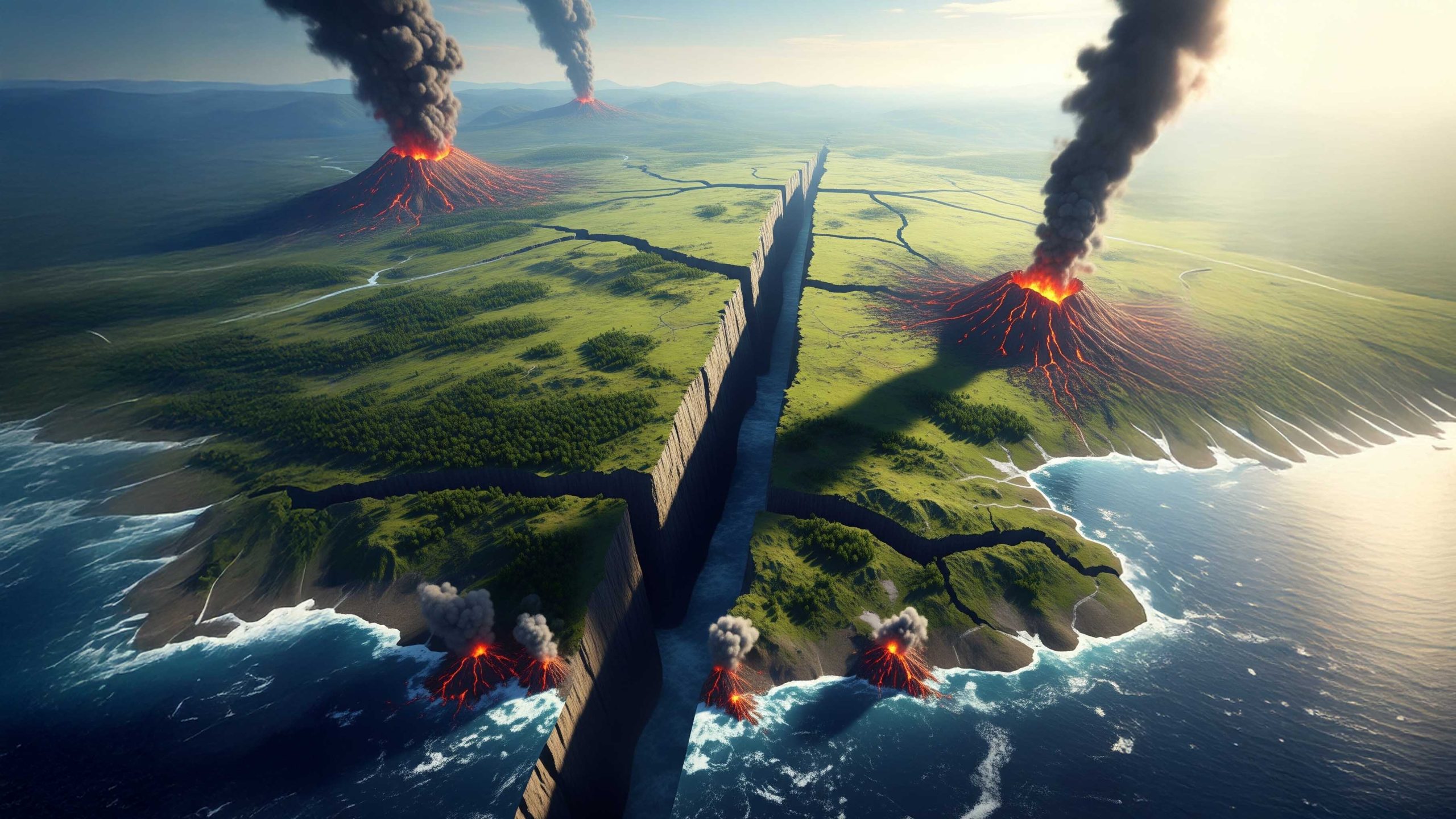
Leave a Reply to Future Supercontinent, Earth's Next Big Landmass – Eoniverse Cancel reply